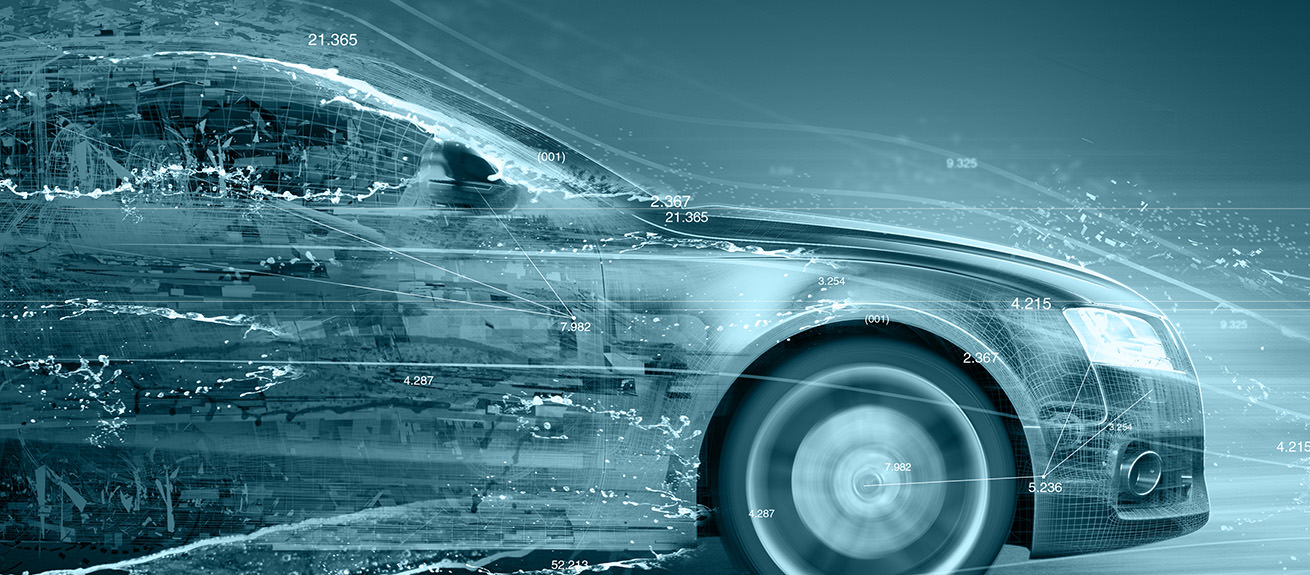
Standing Ovation: McLaren Puts the Digital Orchestra into Action
Distant rumbling, winds picking up
Sit comfortably. Today, in the fourth and final article in our series on digital disruption, we’d like to let you enjoy the sounds of a symphony played by a leading orchestra. Let the lights dim and turn your attention to the stage. You’re going to see and hear a real-life Digital Orchestra in action. Here comes the Maestro Conductor: McLaren, the British Formula 1 team and manufacturer of high performance road cars.
Distant rumbling, winds picking up
At the DBT Center, we think of the pressures imposed by digital disruption as a Digital Vortex. As we explained in article 1 of this series, some industries are closer to the center of the Digital Vortex – they felt its effects sooner and the imperative for digital transformation is stronger. This was confirmed by the evolution we saw comparing our Vortex research results in 2017 versus our earlier 2015 results . For McLaren, a history of performance and innovation made for an attuned sense of what was coming – and a willingness to react. The success of their innovations, first based in high performance cars, gave way to struggles in the late 1990s and early 2000s due to new regulations and competitors. The cost of running a Formula 1 team was stretching the company’s resources. Were these the first signs of digital disruption?
McLaren’s Digital Orchestra
With these market pressures signalling risk of a slow demise, McLaren looked ahead, not behind. They decided to create a separate group, named McLaren Applied Technologies, to increase the impact of their R&D spending by applying technologies developed for racing into other industries. A key development in this regard was real-time data capture, modeling and simulation technology intended for crash safety strategies. Let’s look at how they transformed, through the analogy of the Digital Orchestra, we took you through in article 3.
ORCHESTRA SECTION 1: GO-TO-MARKET
Offerings: McLaren had built strength in data collection, modeling, and simulation in their Formula 1 world. They reapplied this to a wide array of products and services for other industries. A particular strength emerged in consulting to those needing performance in situations of rapid, unpredictable change.
Channel: McLaren decided to price its product and service offerings in a nontraditional way. Instead of the standard consulting practice of charging for time and materials or offering a fixed price, McLaren Applied Technologies decided to charge by sharing in improvement benefits, such as cost savings or a share of new revenues.
SECTION 2: ENGAGEMENT
Customers: McLaren Applied Technologies didn’t let lack of imagination keep them away from potential customers from healthcare providers to manufacturing – anyone that could use fast data capture and analysis in situations of rapid, unpredictable change.
Partnerships: McLaren partnered with various companies to help meet certain customers’ needs. Partnerships enabled them to pool knowledge and perspectives.
Workforce: They expanded the talent pool with new capabilities in data analytics, industrial design, and non-racing industry expertise.
SECTION 3: OPERATIONS
Business Processes: As it was so different from the Formula 1 business, McLaren Applied Technologies required a new set of business processes to bring its offerings to market, promote and sell them, and so forth.
SECTION 4: ORGANIZATION
Structure: While leverages the company’s legacy expertise from racing, McLaren Applied Technologies was set up as a separate business unit organized in cross-functional teams by industry, where industry experts work alongside designers, engineers, and data scientists. The unit is McLaren’s fastest-growing and most profitable company.
Culture: As mentioned above, the fast-paced and performance-focused culture of Formula 1 probably helped lead to openness to change, and this culture is still present at McLaren Applied Technologies. However, the unit has also developed its own identity driven by the perspectives of experts from other fields and the needs of a more broad business.
Composing & Performing Your Digital Symphony
Could you be the next McLaren? The analogy of an “orchestra” helps us conceptualize how companies need to execute their digital transformation. For your Digital Orchestra to perform a “symphony,” you must first set your strategic direction. This requires determining the kinds of value (“music”) you want to create as well as the specific strategies (“orchestration”) you will use.
You’ll need digital business agility to deliver compelling and varied performances. Company leadership plays a key role here – setting the strategic direction, developing the players’ skills and adaptability, and orchestrating a broad range of symphonies in the volatile Digital Vortex.
Above all, a successful digital business transformation demands that all four sections of the Digital Orchestra – Go-to-Market, Engagement, Operations, and Organization – work in concert to transform the company. At the Global Center for Digital Business Transformation, it’s our job to provide understanding of the Digital Vortex and to help executives and companies develop their best Digital Orchestra. We do this through programs for individuals, organizations, and collaborative research, including our 2017 work on the Digital Vortex and the Digital Orchestra.
Your competition is already creating its symphony and tuning up its instruments. Is your company prepared to compose and perform its musical score – and become a Digital Transformation Virtuoso?
If you missed any of the previous three articles in this series, click below to access them.
The Digital Vortex in 2017: It’s not a question of “when”
Overture: Prepare for digital business transformation
Crescendo: Build your Digital Orchestra
Research Information & Knowledge Hub for additional information on IMD publications
in I by IMD 3 April 2024




in I by IMD 20 February 2024

in Forbes.com 20 February 2024
in I by IMD 11 January 2024

in I by IMD 3 April 2024
Research Information & Knowledge Hub for additional information on IMD publications
Research Information & Knowledge Hub for additional information on IMD publications
Research Information & Knowledge Hub for additional information on IMD publications
Research Information & Knowledge Hub for additional information on IMD publications
in I by IMD 20 February 2024
Research Information & Knowledge Hub for additional information on IMD publications
in Forbes.com 20 February 2024
Research Information & Knowledge Hub for additional information on IMD publications
Research Information & Knowledge Hub for additional information on IMD publications
Research Information & Knowledge Hub for additional information on IMD publications
in I by IMD 11 January 2024
Research Information & Knowledge Hub for additional information on IMD publications
Research Information & Knowledge Hub for additional information on IMD publications